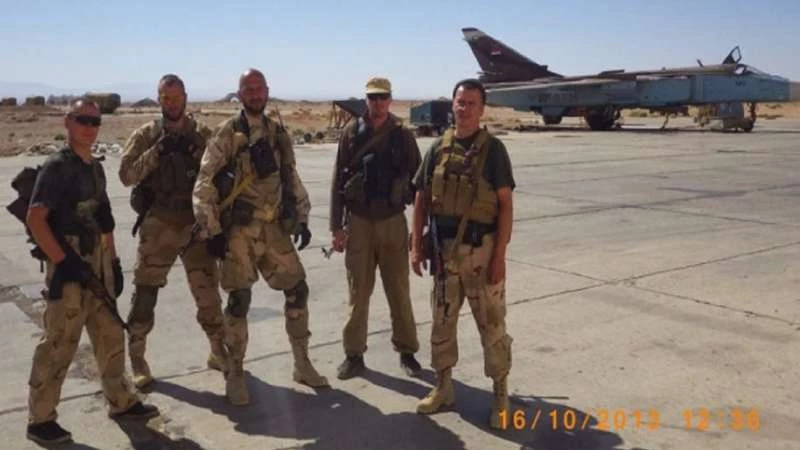While the term foreign fighters has been frequently used to refer to those who fight alongside Jihadist groups in Syria on one hand and those who fight alongside Assad regime on the other, Russian intervention in Syria has been on a larger scale exceeding the organisation capabilities of foreign fighters and the volume of their intervention all combined. Due to the organised form of Russia’s attacks against civilians in Syria, its fighters who are engaged in the combat are as much foreign as Jihadists but almost never referred to as foreign fighters.
According to Russian Defense Minister Sergei Shoigu in December 2016, since the beginning of its operations, “Russian air force has carried out 17,800 air raids, touched 71,000 times the infrastructure of terrorists, thus liquidating 725 training camps, 405 factories and workshops of explosives, 1,500 military equipment, 35,000 fighters, including 204 commanders.” So let’s break this down.
Mission occupation
Russian raids across Syrian territories have been well documented, since the Russian military deployment to Syria in the fall of 2015. But this is not the beginning of the flow of Russian fighters into Syria. Reports had already documented several cases of Russian fighters who travelled to Syria as mercenaries in 2013 to fight with the Assad regime against opposition groups.
While Russia has claimed to target ISIS militants and other “extremist groups”, its attacks have been significantly targeting opposition groups including the Free Syrian Army. “Although Russian President Vladimir Putin’s stated mission was to fight ISIS, his main objective was to guarantee the survival of the Syrian regime in exchange for long-term Russian access to Syrian naval facilities and air bases,” said military analyst Rick Francona.
“Without the presence of Russian forces, Iranian troops and irregulars, Lebanese Hezbollah, as well as Iraqi and Afghan Shi’a militias, the Syrian military would not have been able to dislodge the rebels,” he adds.
By October 2015 Russia’s military build-up in Syria included surface-to-air missiles, combat aircraft, and by the end of September of the same year, it had started flying drone aircraft on surveillance missions. While ISIS has no air capability, the logical explanation for the continuous pouring of sophisticated aerial and military hardware into Syria is to strengthen its military base in the region of West Asia.
By the end of 2015, Russia has managed to deliver inter alia tanks, weapons, 16 Russian Su-27 fighter aircraft, 12 close support aircraft, four large Hip troop-transport helicopters, several Hind helicopter gunships, Mi-28, KA-52, and the modernized Mi-35s and marines to Russia’s new military hub near Latakia and its naval facility in Tartus in western Syria. This amounts to a military occupation of Syria.
Boots on the ground
This agglomeration of equipment and weaponry necessitates boots on the ground. This means that for the organisation of such massive-scale operations, Russian fighters have to be engaged in the fight on the ground.
It is estimated that almost 4,300 Russian fighters are now deployed in Syria, where Russia has steadily increased its military presence over the past years, even after Vladimir Putin’s announcement in March 2016 of a withdrawal of Russian troops. The number of official losses is estimated to be fewer than 100 fighters, for some of whom the families of fighters killed in Syria received a pay-out of around $ 100,000 in compensation. But according to Russian media, the most dangerous operations on the ground are entrusted to mercenaries of a private military company called the “Wagner Group”. The death toll among them remains unknown, as Russian authorities deny their existence.
Russia has built up substantial ground forces with new outposts in various locations in Syria such as Palmyra and coastal cities. According to a CNN report in mid 2016, “The Hmeymim air base on the outskirts of Latakia, on the country’s northwest coast, is a mix of an existing Syrian military airfield and container housing units that the Russians have set up. The camp is large, modern, and well-maintained.”
By 2017, Russian intervention has never been stronger. Against all odds, there is presence of Russian and American forces in the city of Manbij in northern Syrian, as an indication of mutual cooperation and increase of the number of fighters on the ground.
Collateral damage?
“Syrian and Russian airstrikes continued to target, or indiscriminately strike civilian areas, including homes, markets, schools, and hospitals, using wide-area explosives, barrel bombs, cluster munitions, and flammable incendiary weapons”, according to HRW. In 2016, as an HRW 2017 report shows, there were numerous attacks on health facilities in Idlib, Aleppo, Hama, and Homs, killing medical staff, civilians and patients.
In the recent operation to recapture Aleppo, for instance, the regime and Russian air strikes often appeared to have been indiscriminate, deliberately targeting civilians. According to the Violence Documentation Centre, the Syrian-Russian bombing campaign has killed more than 440 civilians, including more than 90 children during these attacks alone.
Russia has managed to throw tens of thousands of more Syrian refugees on the roads of exodus and continues to cooperate with local and foreign militias and mercenaries led by Iran to become the master of the game of foreigners in Syria. While an exact number of Russian fighters in Syria remains difficult to verify, all indicators point out in one direction: Russian fighters don’t look like to be leaving Syria any time soon.
-----------------------------------------------------
Hakim Khatib is a political scientist who works as a lecturer for politics and culture of the Middle East and journalism at Fulda University of Applied Sciences and the editor-in-chief of the Mashreq Politics & Culture Journal (MPC Journal).



التعليقات (0)